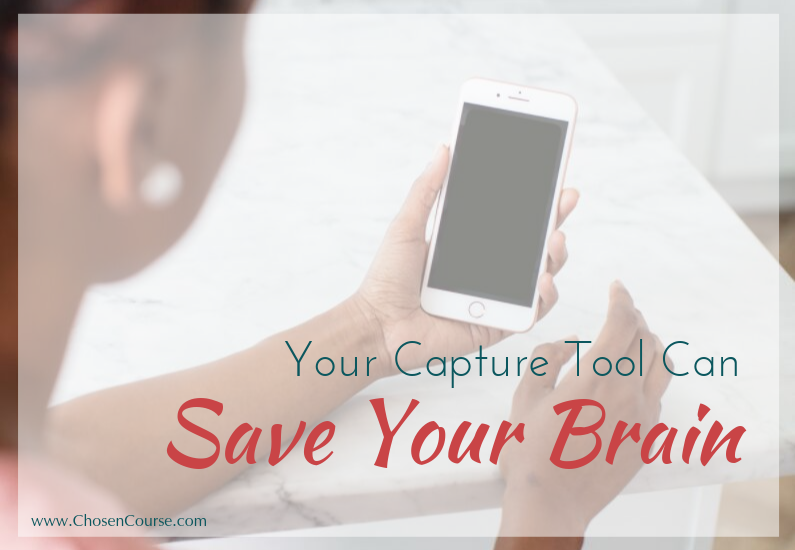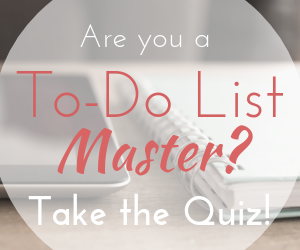Carrying a Capture Tool
Have you ever had a moment when a great idea comes to you, but you don’t have any way to write it down? Or perhaps what comes to you isn’t a great idea but an item you need to pick up at the grocery store or a book recommendation that you want to be able to remember later. One of the most essential tools for a productive lifestyle is a capture tool.
While my mother says that a slow or spacey memory is one of the pains of growing older, I would argue that trusting your mind to be able to bring up important information when requested is a massive challenge at any age. Inevitably, that recommended book’s title will skip right out of your head 30 minutes later, and you won’t remember that important grocery-store item until you’re driving home from the store after picking up everything else that’s less important.
The concept of writing things down to help ourselves remember them has been around, literally, for centuries. In his book Hamlet’s BlackBerry: Building a Good Life in the Digital Age, William Powers describes the wax-tablet gadgets in use during Shakespeare’s time as on-the-go capture tools. If capture tools helped Shakespeare capture his brilliance, then we can at least learn how to rely on them to remember to pick up some eggs.
Now, you might be saying, “Okay, I’ve been writing grocery lists and to-do lists for years. How is this different? A capture tool puts all of that information at your fingertips at any moment rather than scattered around your world on a plethora of different scraps of paper or Post-it notes.
What Makes a Capture Tool Work?
- It’s with you, or within easy reach, at all times. David Allen talks about the necessity of “ubiquitous capture.” You must always be able to capture information immediately and easily as soon as your mind churns it up. Thus, your capture tool must be portable and convenient to carry.
- It allows you to subcategorize and reorganize information easily. Putting that grocery item in the middle of your notes about this afternoon’s meeting will probably mean that you forget to pick up the eggs yet again. So, you have to be able to subdivide your information or easily move it where it will be most useful.
- It fits your preferred working style. For some people, a smartphone with a few well-designed apps accomplishes this goal. For others, there will never be a substitute for a good notebook and a pencil. For many years, I used a hybrid of both: I would capture some types of information electronically in my smartphone and other types of information in writing on the fly. The key is having clear logic and knowing which information belongs where. There is no one right answer, but you do have to find the system that feels easy and natural for you. Don’t let marketing sway you into believing that you’ll transform from a confirmed Luddite into a gadget wiz overnight.
- It’s trustworthy. If you frequently have to go hunting for your notes in your book or gadget and fail to find them, then you will begin to resist using the tool—a certain death knell. Make the sections of your capture tool clear and easy to find. Have one place for each category: Books to Read, Movies to Watch, Tasks, Meeting Notes, Computer/Internet Passwords (properly encoded), Grocery List, and so on.
- It always has space to write more. If you use a paper system, then make sure you always have adequate paper available to add or the next capture notebook is ready to go when your current one gets full. My favorite paper system is the Levenger Circa System which I have used and recommended for years. It looks like a spiral notebook but functions more like a flexible binder because the paper in this system is punched like an old-school Rolodex, thus making it simple to move pages around, remove them, or add more paper wherever you want. See Resources, below, for more information.
Using a Capture Tool
Next Actions
- Choose your preferred capture tool, and begin carrying it with you everywhere.
- Practice capturing everything as it pops into your head. Think of a task? Reach for your capture tool. Someone mention a book for you to read? Reach for your capture tool. Don’t trust your mind to remember that detail 15 minutes later. If it’s important, or if it requires future attention or action, then grab your capture tool and make a note in an appropriate place.
- Seed your environment for effective capture. If you’re using a paper system, such as the Levenger Circa System or a loose-leaf binder, then keep the appropriate type of paper and pens in all the places where you spend time: your desk, your bedside table, your kitchen, the bathroom—whenever you might need to capture the idea that just popped into your head. Then you can add that page to your notebook or binder.
- If you’re using a digital system, get comfortable with having that smartphone always within arm’s reach… even in the bathroom. Additionally, you might want to look for cloud-computing solutions that will allow you to access your information from any computer with Internet access, so that with or without your smartphone in hand, you’ll be able to get to your lists to add or access information. Evernote is a great option for digital note capture and Asana.com is my favorite digital task management tool.





Looks helpful for persons with many tasks